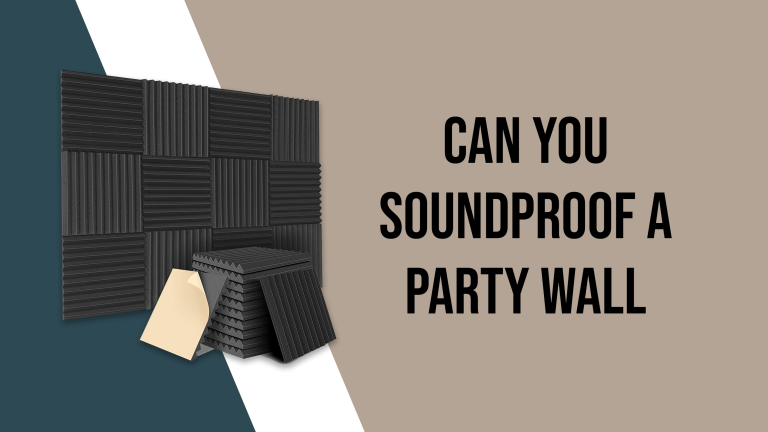Cheapest Way To Soundproof a Room
Noise pollution can be a major issue in our daily lives, whether it comes from external sources such as traffic and construction, or internal sources like loud neighbors or household appliances. Finding the cheapest way to soundproof a room can help you achieve a peaceful and quiet living environment.
In this article, we’ll discuss various low-cost soundproofing methods to help you create a more serene space.
Basic Principles of Soundproofing
Absorption
Absorption is the process of reducing sound energy by converting it into heat. Materials like acoustic foam, carpets, and curtains can absorb sound effectively.
Blocking
Blocking is the method of preventing sound from passing through a barrier. Dense materials like drywall, insulation, or mass loaded vinyl can be used to block sound transmission.
Dampening
Dampening reduces the vibrations that cause sound to travel. Materials like rubber, foam, and neoprene can help dampen vibrations and reduce noise transmission.
Identifying Noise Sources and Entry Points
Before implementing soundproofing techniques, it’s essential to identify the sources of noise and their entry points. This will help you determine the most effective methods to target specific areas and reduce noise.
Low-Cost Soundproofing Methods
Weatherstripping
Sealing gaps around windows and doors with weatherstripping can prevent noise from entering your room and is an affordable soundproofing option.
Door Sweeps
Installing door sweeps at the bottom of doors can block noise from entering through the gap between the door and floor.
Acoustic Foam Panels
Acoustic foam panels are lightweight, affordable, and can absorb sound effectively. Attach these panels to walls, ceilings, or doors to reduce noise.
Soundproof Curtains
Heavy, thick curtains can act as a barrier to block outside noise and help absorb sound within a room.
Area Rugs
Placing area rugs on hard flooring can absorb sound and reduce noise transmission between floors in multi-story buildings.
Wall Hangings
Hanging tapestries, quilts, or large canvases on walls can help absorb sound and reduce echo.
Bookshelves
Bookshelves filled with books can act as a sound barrier and help absorb noise.
Strategic Furniture Placement
Arranging furniture strategically can help absorb and block noise. For example, placing a large sofa or bookshelf against a shared wall can reduce noise transmission.
White Noise Machines
White noise machines produce a consistent sound that can mask unwanted noise, making it easier to concentrate or sleep.
DIY Soundproofing Panels
Creating your own soundproofing panels with materials like fiberglass insulation, wood, and fabric can be a cost-effective solution for reducing noise.
Why Soundproof a Room?
External Noise
External noise, like traffic, construction, or nearby businesses, can disrupt your daily routine and make it difficult to focus or relax.
Internal Noise
Internal noise, such as loud neighbors, noisy kids, or appliances, can be just as disruptive and may require soundproofing to maintain a peaceful environment.
Conclusion
Soundproofing a room doesn’t have to be expensive. By identifying the sources of noise and their entry points, you can implement various low-cost soundproofing methods to create a quieter and more peaceful living environment. Weatherstripping, door sweeps, acoustic foam panels, soundproof curtains, area rugs, wall hangings, bookshelves, strategic furniture placement, white noise machines, and DIY soundproofing panels are all affordable options that can make a significant difference in reducing noise.
FAQs
What is the most effective cheap soundproofing material?
Acoustic foam panels are an affordable and effective soundproofing material that can be easily installed on walls, ceilings, or doors.
Can I soundproof my room without making any permanent changes?
Yes, using methods like soundproof curtains, area rugs, wall hangings, and strategic furniture placement can help soundproof your room without making permanent changes.
How can I soundproof my room for free?
Using items you already have at home, like blankets, quilts, or thick curtains, can help absorb sound and reduce noise. Placing furniture strategically against noise sources can also be helpful.
How do I soundproof my bedroom for better sleep?
Install weatherstripping around windows and doors, use soundproof curtains, place area rugs on hard flooring, and use a white noise machine to create a more peaceful sleep environment.
Is it possible to completely soundproof a room?
Completely soundproofing a room is challenging, but using a combination of soundproofing methods can significantly reduce noise and create a more peaceful environment.








